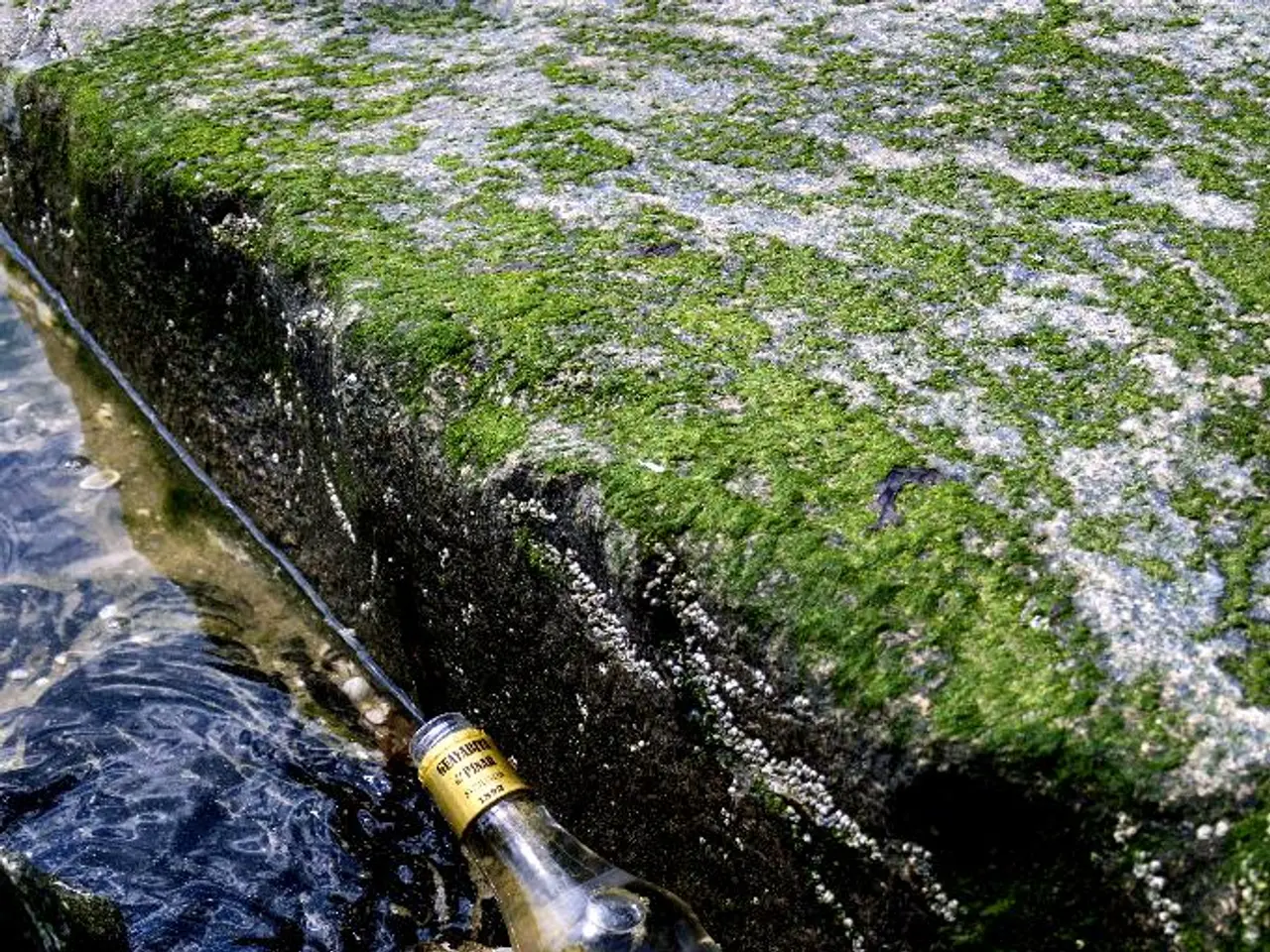Unprecedented quantities of microplastics detected in the waters of Contrex and Hépar, according to Mediapart's latest report
Nestlé Waters Faces Trial Over Microplastic Pollution Allegations
Nestlé Waters, a global leader in the bottled water industry, is set to stand trial in Épinal, France from November 24 to 28, 2025, following accusations of illegal dumping and extensive microplastic pollution in its Contrex and Hépar bottled waters [1][2].
The French Office for Biodiversity (OFB) and the Central Office for Combating Attacks on the Environment and Public Health (OCLAESP) have supported the investigation into these allegations. The investigation found extremely high levels of microplastics in the waters, with up to 2,096 particles per liter in Hépar and 515 in Contrex [2][3]. These concentrations are believed to originate from illegal waste dumps managed by Nestlé Waters near several Vosges sites, including Contrexéville and surrounding communes [2].
The total volume of waste in these dumps is equivalent to 126 Olympic-sized swimming pools [2]. Nestlé Waters denies the accusations, citing independent lab tests affirming their water's safety and asserting no direct link has been proven between the waste sites and water contamination [1][2]. However, French prosecutors have proceeded with legal action due to environmental and public health concerns.
Microplastics, once degraded, are fragmented into micro and nanoplastics, making them difficult to remove from soils and underground water networks [4]. The analysis of the investigation shows that microplastic levels in the Vosges soils due to Nestlé's dumps are significantly higher than normal levels [2].
The presence of microplastic pollution in Contrex and Hépar waters has been found. These concentrations are 51,000 to 1.3 million times higher than those found in lakes, rivers, and streams in two studies used by the investigators [2]. Moreover, these levels are higher than those found in other bottled waters, according to researchers [2].
It is worth noting that the levels of microplastics in natural mineral waters are not regulated [5]. Nestlé Waters admits in a confidential note from 2022 that the dumps could have an impact on water quality [1].
This case has been highlighted as a major environmental scandal in France, with potential health risks from microplastics entering human bodies through drinking water [1][4]. The trial will be closely watched as it impacts public trust and accountability in the bottled water industry.
Previously, Mediapart, Le Monde, and Radio France have revealed illegal treatments of Nestlé Waters' waters [6]. Nestlé Waters is accused of storing waste and maintaining four illegal dumps in Contrexéville, They-sous-Montfort, Saint-Ouen-Les-Parey, and Crainvilliers [6].
References:
[1] Le Monde. (2023). Nestlé Water accused of illegal dumping in France. Retrieved from https://www.lemonde.fr/les-decodeurs/article/2023/04/06/nestle-accusee-d-avoir-dumpe-des-dechets-en-france_6069047_1662778.html
[2] Mediapart. (2023). Nestlé Waters accused of microplastic pollution in France. Retrieved from https://www.mediapart.fr/en/environment/060423/nestle-waters-accused-of-microplastic-pollution-in-france
[3] France Info. (2023). Nestlé Waters accused of microplastic pollution in France. Retrieved from https://info.francetvinfo.fr/environnement/060423/nestle-waters-accusee-de-pollution-par-microplastiques-en-france_3546127.html
[4] European Commission. (2021). Microplastics in water. Retrieved from https://ec.europa.eu/environment/water/water-pollution/microplastics_en.htm
[5] Nestlé Waters. (2021). Water quality. Retrieved from https://www.nestle-waters.com/sustainability/water/water-quality
[6] France 24. (2023). Nestlé Waters accused of illegal dumping in France. Retrieved from https://www.france24.com/en/live-news/20230406-nestle-waters-accused-of-illegal-dumping-in-france
- The investigation into Nestlé Waters' allegations of illegal dumping and microplastic pollution in their Contrex and Hépar bottled waters has uncovered significant levels of microplastics in both the waters and the Vosges soils, raising concerns in the realm of both environmental-science and health-and-wellness.
- The trial against Nestlé Waters in Épinal, France, related to microplastic pollution in their Contrex and Hépar bottled waters, highlights the importance of addressing climate-change issues, as microplastics, once degraded, can contribute to environmental degradation and potentially pose health risks.




